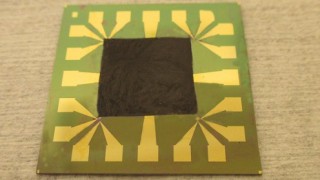
Researchers from Chalmers University of Technology have devised a thin, graphene-based film that provides a more efficient means of cooling electronic devices. According to the scientists involved in the study, which was published in a recent issue of the journal Advanced Functional Materials, the technology outstrips the thermal conductivity capacity of copper by four times.
While today’s devices are becoming increasingly smaller and more efficient, they also generate a considerable amount of heat. According to Moore’s Law, the number of transistors packaged into integrated circuits will double every two years. More recently, however, chip manufacturers have struggled to continually shrink down the transistor size, because of fundamental limits in dissipating heat energy.
Finding more efficient ways of removing this excess heat will ensure engineers eke out greater performance from their devices, while also driving down energy costs and boosting device lifespan. According to a recent study, half of all the energy expended on running today’s computer servers goes towards keeping them cool.
A few years ago, researchers from Chalmers University of Technology demonstrated that graphene could be used to cool silicon-based electronics.
“But the methods that have been in place so far have presented the researchers with problems,” explained professor Johan Liu of Chalmers University of Tech. “It has become evident that those methods cannot be used to rid electronic devices off great amounts of heat [sic], because they have consisted only of a few layers of thermal conductive atoms.”
According to Liu and colleagues, adding additional layers of graphene to the surface leads to less adhesion. The researchers have overcome this problem by using strong covalent bonds - as opposed to weak van der Waals bonds - to improve the adhesiveness between the graphene film and the surface of the silicon-based device.
Using (3-Aminopropyl) triethoxysilane (APTES) molecules, the researchers modified the graphene to create a series of “silane bonds” between the graphene and silicon, thereby doubling graphene’s thermal conductivity capacity.
![]()
In the future, Liu says the new technology could prove effective in implementing better cooling techniques in microelectronic devices: “One example is the integration of graphene-based film into microelectronic devices and systems, such as highly efficient Light Emitting Diodes (LEDs), lasers and radio frequency components for cooling purposes. Graphene-based film could also pave the way for faster, smaller, more energy efficient, sustainable high power electronics.”
Image credit: Johan Liu, Chalmers University
